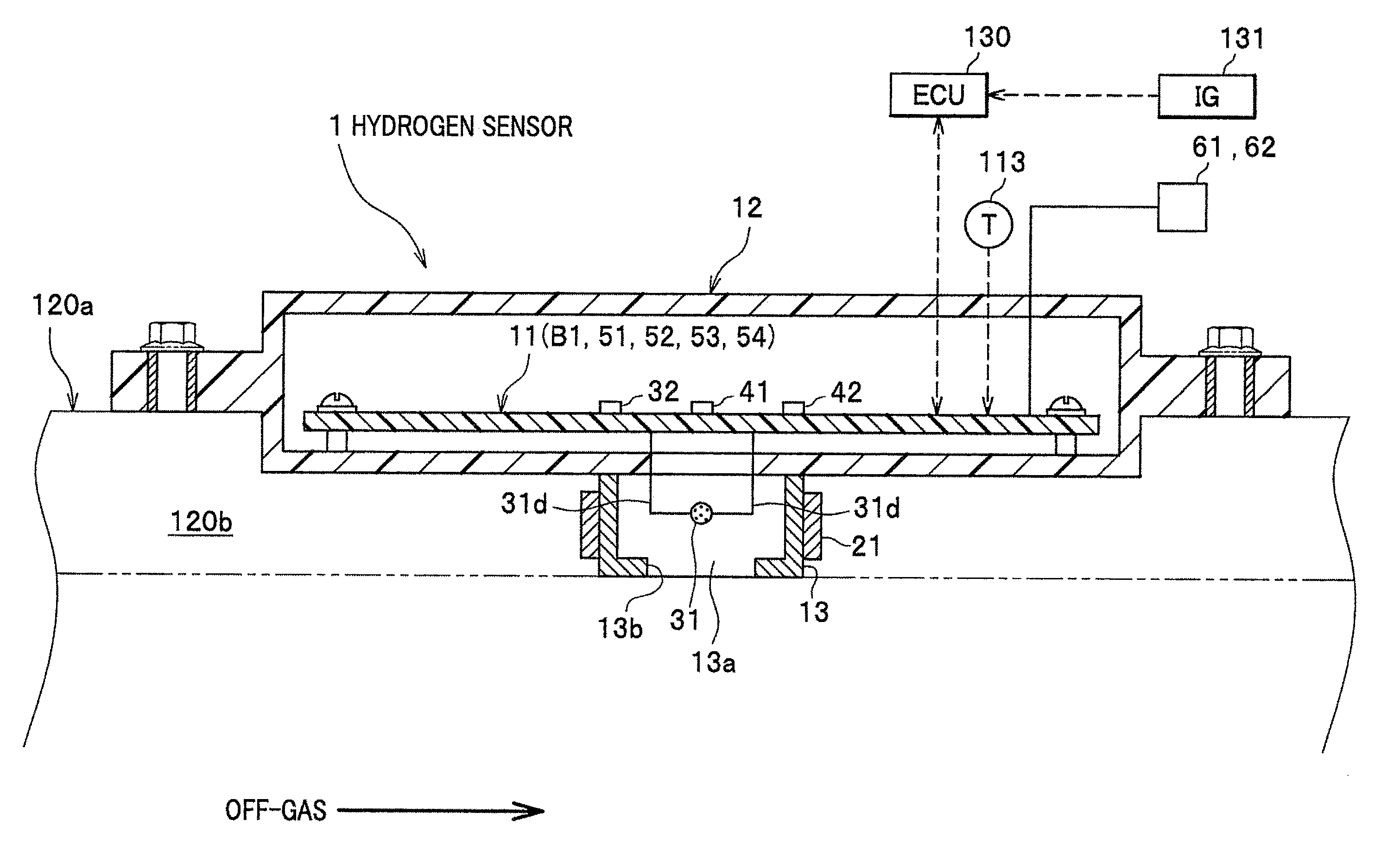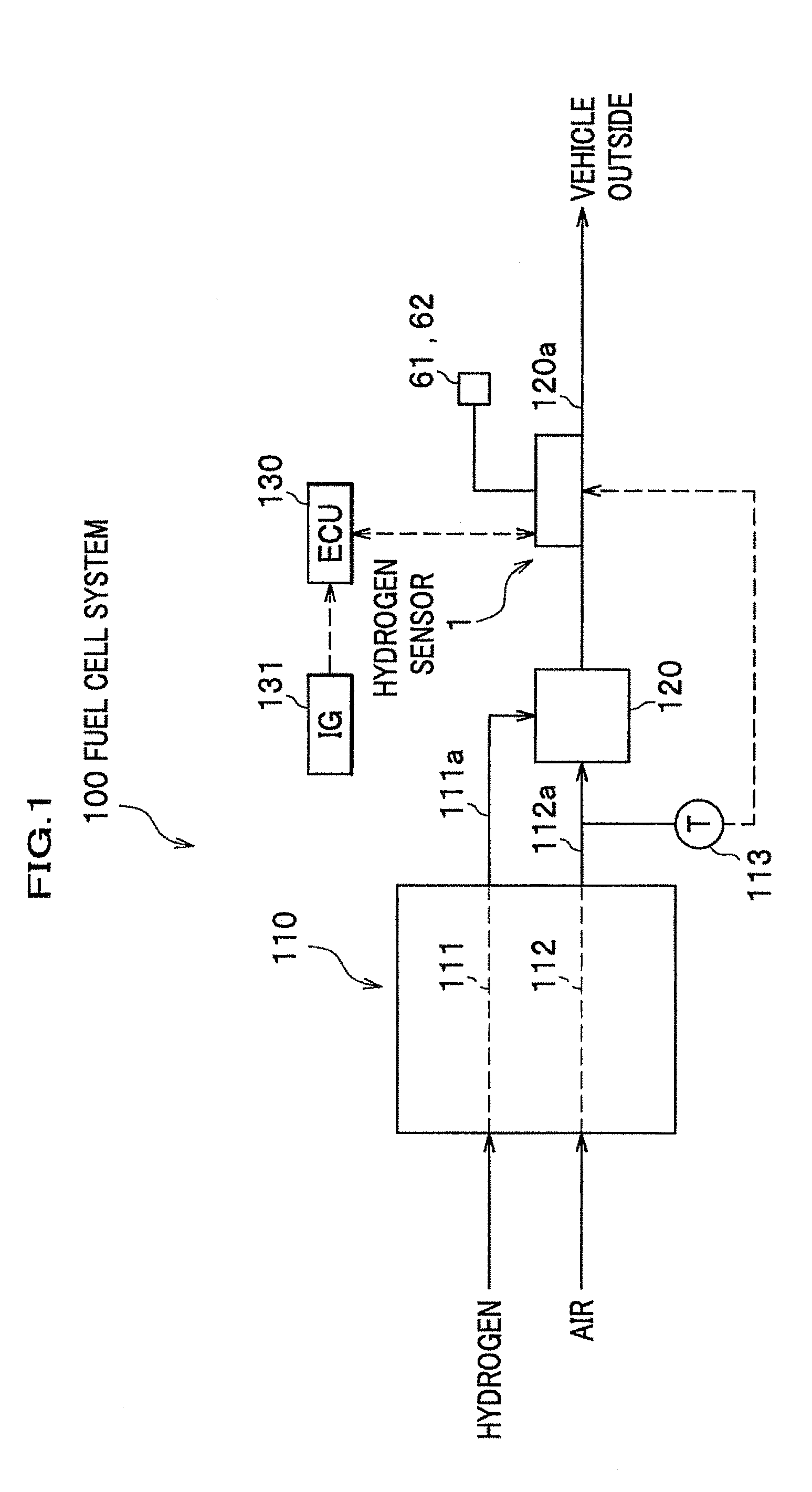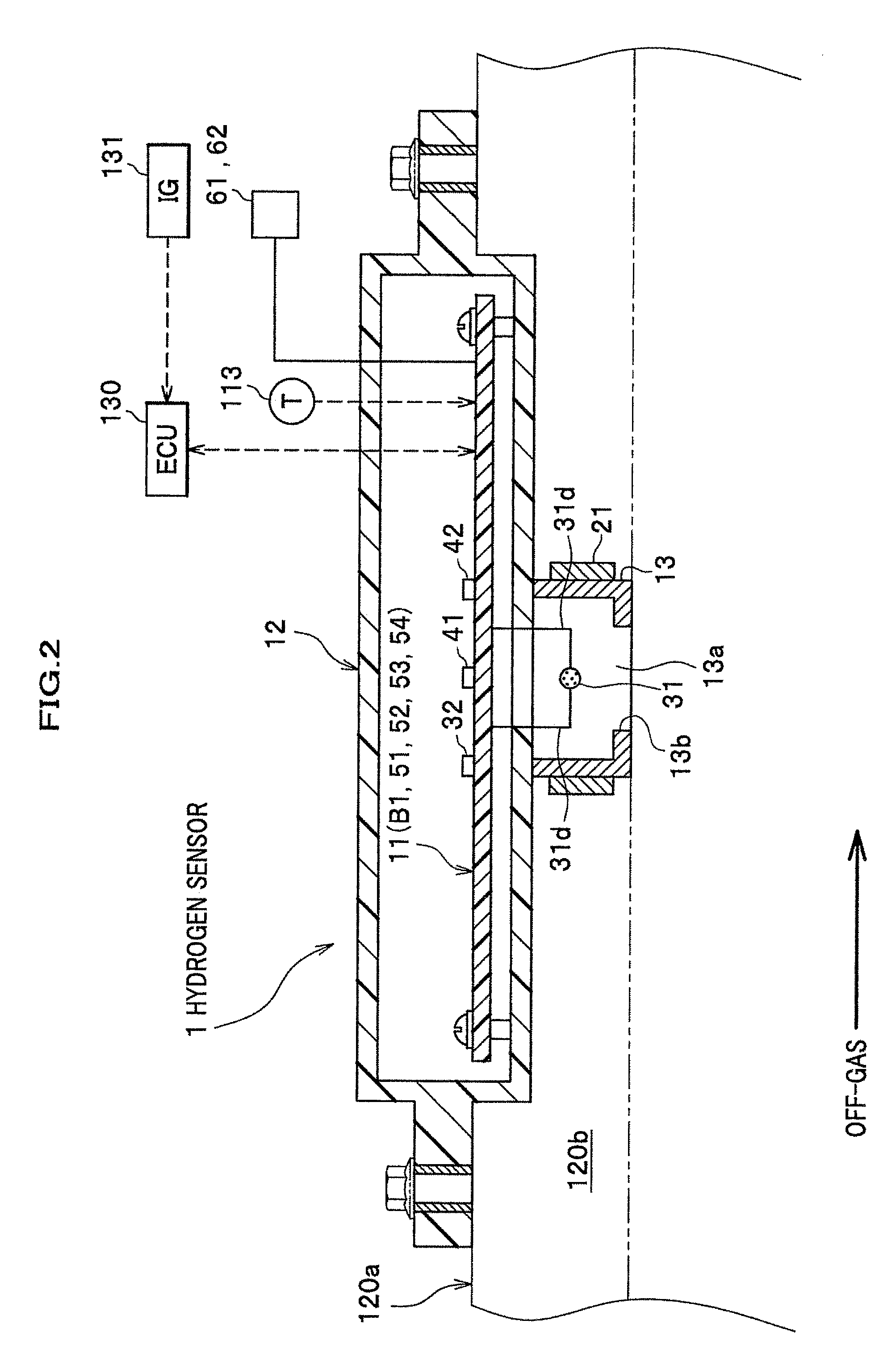Gas sensor
- Summary
- Abstract
- Description
- Claims
- Application Information
AI Technical Summary
Benefits of technology
Problems solved by technology
Method used
Image
Examples
first embodiment
[0044]Hereinafter, will be explained the first embodiment of the present invention referring to FIGS. 1 to 9.
[0045]First, a fuel cell system 100 incorporating a hydrogen sensor 1 (or gas sensor) will be explained. The fuel cell system 100 is mounted on a fuel cell vehicle (or moving body), comprising a fuel cell stack 110 (or fuel cell), a diluter 120, a temperature sensor 113, a hydrogen sensor 1, and ECU 130 (or Electric Control Unit).
[0046]
[0047]The fuel cell stack 110 is a polymer electrolyte fuel cell (or PEFC) and constructed by stacking a plurality of unit cells; the unit cell being made by sandwiching a membrane electrode assembly (or MEA) between separators (not shown). The MEA comprises an electrolytic membrane (or polymer electrolyte membrane), an anode and a cathode; the anode and the cathode sandwiching the MEA therebetween. An anode flow passage 111 and a cathode flow passage 112, comprised of grooves or through holes, are formed in each separator.
[0048]Further, when h...
modified example
[0131]Hereinbefore, an embodiment of the present invention has been explained. However, the present invention is not limited to the embodiment. Therefore, the embodiment may be appropriately combined with a construction in another embodiment described hereinafter, or may be modified as mentioned below.
[0132]In the aforementioned embodiment, the construction in which gas to be detected is hydrogen has been exemplified. However, other gases may be detected.
[0133]Further, in the aforementioned embodiment, the construction in which a hydrogen sensor 1 is a catalytic combustion type has been exemplified. However, other types, for example, a gas sensor in a semiconductor type may be utilized.
[0134]Moreover, in the aforementioned embodiment, the construction in which a fuel cell vehicle is equipped with a fuel cell system 100 has been exemplified. However, other moving bodies, for example, a motorcycle, a train, a ship may be equipped with a fuel cell system 100. Furthermore, the present i...
second embodiment
[0135]Next, will be explained the second embodiment referring to FIGS. 10 to 13. Note the different parts form the first embodiment will be only explained, by omitting the same parts.
[0136]>
[0137]As shown in FIG. 10, instead of the heater operation circuit 52 (see FIG. 4), a heater operation circuit 70 is included. Further, the microcomputer 51 does not control the heater operation circuit 70. Hereby, the control processing thereof is omitted.
[0138]
[0139]As shown in FIG. 11, a heater operation circuit 70 comprises a bridge circuit B2, an amplifier 91, and a transistor (IGBT or the like).
[0140]The bridge circuit B2 comprises a first branched part 81 and a second branched part 82, and is constructed by connecting the first branched part 81 and the second branched part 82 with the outside power source in parallel. The first branched part 81 is constructed by connecting the heater 21 and the A resistor 83 in series. The second branched part 82 is constructed by connecting the B resistor...
PUM
 Login to View More
Login to View More Abstract
Description
Claims
Application Information
 Login to View More
Login to View More - R&D
- Intellectual Property
- Life Sciences
- Materials
- Tech Scout
- Unparalleled Data Quality
- Higher Quality Content
- 60% Fewer Hallucinations
Browse by: Latest US Patents, China's latest patents, Technical Efficacy Thesaurus, Application Domain, Technology Topic, Popular Technical Reports.
© 2025 PatSnap. All rights reserved.Legal|Privacy policy|Modern Slavery Act Transparency Statement|Sitemap|About US| Contact US: help@patsnap.com



